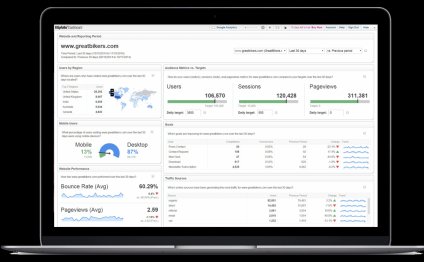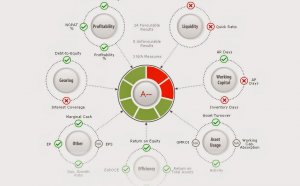
Ratios in Financial Accounting
Ratio - the term is enough to curl one's hair, conjuring up those complex problems we encountered in high school math that left many of us babbling and frustrated. But when it comes to investing, that need not be the case. In fact, there are ratios that, properly understood and applied, can help make you a more informed investor. (Find out how this method can be applied strategically to increase profit. Check out .)
IN PICTURES: 9 Simple Investing Ratios You Need To Know
1. Working Capital Ratio
Assessing the health of a company in which you want to invest involves understanding its liquidity - how easily that company can turn assets into cash to pay short-term obligations. The working capital ratio is calculated by dividing current assets by current liabilities.
So, if XYZ Corp. has current assets of $8 million, and current liabilities of $4 million, that's a 2:1 ratio - pretty sound. But if two similar companies each had 2:1 ratios, but one had more cash among its current assets, that firm would be better able to pay off its debts quicker than the other.
2. Quick Ratio
Also called the acid test, this ratio subtracts inventories from current assets, before dividing that figure into liabilities. The idea is to show how well current liabilities are covered by cash and by items with a ready cash value. Inventory, on the other hand, takes time to sell and convert into liquid assets. If XYZ has $8 million in current assets minus $2 million in inventories over $4 million in current liabilities, that's a 1.5:1 ratio. Companies like to have at least a 1:1 ratio here, but firms with less than that may be okay because it means they turn their inventories over quickly.
3. Earnings per Share
When buying a stock, you participate in the future earnings (or risk of loss) of the company. Earnings per share (EPS) measures net income earned on each share of a company's common stock. The company's analysts divide its net income by the weighted average number of common shares outstanding during the year.
4. Price-Earnings Ratio
Called P/E for short, this ratio reflects investors' assessments of those future earnings. You determine the share price of the company's stock and divide it by EPS to obtain the P/E ratio.
If, for example, a company closed trading at $46.51 a share and EPS for the past 12 months averaged $4.90, then the P/E ratio would be 9.49. Investors would pay $9.49 for every generated dollar of annual earnings.
Even so, investors have been willing to pay more than 20 times the EPS for certain stocks if hunch that future growth in earnings will give them an adequate return on their investment.
Use the Investopedia Stock Simulator to trade stocks risk free!
5. Debt-Equity Ratio
What if your prospective investment target is borrowing too much? This can reduce the safety margins behind what it owes, jack up its fixed charges, reduce earnings available for dividends for folks like you and even cause a financial crisis.
The debt-to-equity is calculated by adding outstanding long and short-term debt, and dividing it by the book value of shareholders' equity. Let's say XYZ has about $3.1 million worth of loans and had shareholders' equity of $13.3 million. That works out to to a modest ratio of 0.23, which is acceptable under most circumstances. However, like all other ratios, the metric has to be analyzed in terms of industry norms and company specific requirements.
6. Return on Equity
Common shareholders want to know how profitable their capital is in the businesses they invest it in. Return on equity is calculated by taking the firm's net earnings (after taxes), subtracting preferred dividends, and dividing the result by common equity dollars in the company.
Let's say net earnings are $1.3 million and preferred dividends are $300, 000. Take that and divide it by the $8 million in common equity. That gives a ROE of 12.5%. The higher the ROE, the better the company is at generating profits.
The Bottom Line
Applying formulae to the investment game may take some of the romance out of the process of getting rich slowly. But the above ratios could help you pick the best stocks for your portfolio, build your wealth and even have fun doing it. (For more, check out our Financial Ratio Tutorial.)
Catch up on your financial news; read Water Cooler Finance: The New iPod And The Roller Coaster Market.
YOU MIGHT ALSO LIKE



Share this Post
Related posts
Ratio Analysis in Financial Accounting
Financial ratios are mathematical comparisons of financial statement accounts or categories. These relationships between…
Read MoreFinancial Accounting International Financial Reporting Standards
Applying these international standards means standardising companies financial reporting so that: financial statements are…
Read More










